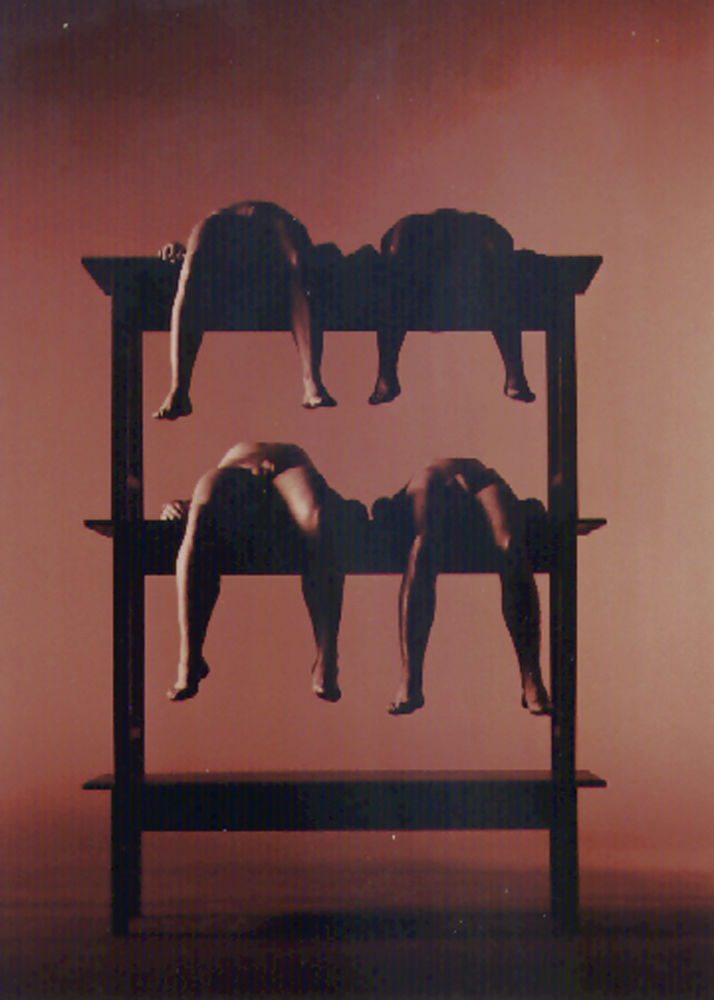"Entscheidungsnotstand"
GBK# JK 190
C-print
signed, dated and numbered on verso
Black is not clearly an essential color of radical modernism. It suggests sublimity and emptiness, cosmos and apocalypse, especially in a pathetically masculine aspect in the New York School after 1950. But black can also be humor and anarchy, and this is where Europe began to speak out again from 1960 onwards. Sometimes the reaction is a denunciation of this black painting, a rejection of its theatricality: the "Deus ex machina" becomes a puppet in Klauke's entire group of works "Desaströses Ich" (disastrous ego) – with the second title "Trost für Arschlöcher" (consolation for assholes) – and the wash bowls suggest clinical moments of great discomfort. This can also be found in the three-part photographic work Seinstrübung (1996/2000), and the artist also depicts the frenzied movement best conveyed by photography. The discrepancy between this seemingly bright blurring of standstill and the dark, narrow, but consistently undefined space forms one of the attacks on heroic pathos.
Two pictures in the series from the last decade revisit the construction of gender thematized in the 1970s in red-tinted photographic works Entscheidungsnotstand (1996/97) and Bewußtseinserweiterung (1996/2000). Klauke places the woman without resistance as a commodity stackable through tables, interchangeable with male models. The loneliness of the actresses is given not only by the intensified play of shadows due to the low, lateral incidence of light, but especially by the reduction to the carnal. In addition, the red toning reinforces the feeling of standing in front of supposed slaughterhouses for future clones. The black art of pre-scientific alchemy has given way here to the faith in technology of reproductive medicine.
(from: Brigitte Borchhart-Birbaumer, Antifaustus Jürgen Klauke oder stirbt das Genie in schwarzer Anarchie? in: Museum Moderner Kunst Passau (ed.), Jürgen Klauke, Hoffnungsträger. Aspekte des Desaströsen Ich, 2006, translated with deepL)
